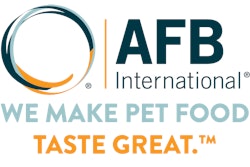
As the global reach of commercially produced pet diets continues to expand, one thing remains consistent from market to market, from formula to formula: The taste of petfood remains incredibly important, but hard to convey and explain to pet parents. From emerging markets where companion animals are just starting to make the leap from table scraps to prepackaged, extruded food to health-conscious developed markets where overweight cats and dogs need to make the switch from a calorie-laden petfood to a low-fat diet option, taste remains king. If Fido or Fifi turn up their nose at what their pet parent is filling their bowl with, no amount of clever ad campaigns or transparent labeling will get that customer to return to your brand.
This is why the palatability of petfood will always be important to petfood producers and why it’s important for you to know what is available to help enhance the flavor, smell and texture of dog and cat food. Let’s take a look at some of the most unique palatants, latest technology and ground-breaking research in the field of palatability in 2014.
Palatants are ingredient systems that are specially designed to make petfoods, treats and supplements taste better. Palatants entice a pet to consume a food, treat or supplement that, while nutritious, may be inconsistent with their native diet, AFB International explains. Dry foods make more frequent use of palatants, and use palatants at higher inclusion rates than wet foods. (Wet foods tend naturally to be more palatable due to processing techniques and higher moisture content.) Palatants are available as dry powders, liquids and gravies, and are designed to be applied topically, while others function best when mixed into the kibble or can, says AFB. Typically, palatants are formulated for either dog or cat foods, but sometimes a palatant works well across diets.
Last year, AFB International launched their Palatants Plus blog. The blog is designed to share the latest petfood palatability research and developments with petfood industry professionals and how they can enhance petfood performance. Current topics include collaborative innovation, liquid palatants, tracking palatability, electronic nose (e-nose), electronic tongue (e-tongue) and flavor fatigue. New content is added regularly, like this post on Palatant Basics: Your Questions Answered.
Diet foods can be a hard sell to a picky pet, as can ingredient-free formulas for pets with allergies or medicated treats or foods. This is where palatants and flavor enhancers can really help. Innova (www.innovaflavors.com), for example, says its Vegamine AT low-sodium/high-enhancement hydrolyzed vegetable protein can lower sodium in foods while still maintaining a desirable flavor, rather than using a potassium chloride. The low-sodium hydrolyzed vegetable protein is ideal for use as a flavor enhancer in gravies, soups, stews and petfoods.
Malt Products Corporation (www.maltproducts.com) offers malt and molasses ingredients to add to petfoods. In many cases, flavor masking is a major problem when pharmaceuticals or bitter ingredients need to be used and it has been found that malt and molasses provide just the right masking needed to get pets to consume these products, according to the company. Their flavor, color, sweetness, binding, humectancy and bulking characteristics provide opportunities to formulate products with enhanced palatability. Both liquid and dry malts and molasses are available.
Sonac (www.sonac.biz) ovine plasma powder is manufactured using ovine blood from free range lambs and sheep living in Australia and can be used to formulate limited-ingredient wet petfood, treats and snacks. The powder binds the elements of the petfood together and delivers additional taste and palatability benefits. Ovine plasma powder avoids the allergies suffered by pets when consuming bovine or porcine products.
Kemin Industries (www.kemin.com) offers Palasurance SP Dog Dry–Granulated (SPDD-G) palatability enhancer, a chicken liver-based, dry palatant designed specifically for optimizing tablet hardness and friability during high-speed tableting. It serves as an alternative to beef liver and chicken liver powders, according to the company, and is free of ruminant-derived ingredients.
While new palatants can ensure great flavor for your formulas, new technology that helps create and test the quality of these enhancers continues to be just as important.
In order to constantly offer petfood manufacturers performing palatants, SPF, part of Diana's petfood division, continues to work on the comprehension of dogs' and cats' palatability drivers. The company continues to develop its expertise by conducting and sharing research to more fully understand animal feeding behavior. In a recent study, they confirmed it was possible to distinguish cat populations showing similar food preferences and even to map cat individual preference profiles. This research opens new paths for cat food performance and suggests that segmenting products according to cat food preferences could be an opportunity to better satisfy the cat population.
Beside this research focused on animals, Diana Pet Food experts are considering another major component of the palatability system: the pet owner. Market feedback on the performance of a food is closely linked with owner perception of pet enjoyment during meal time. Panelis, Diana Pet Food expert center in palatability measurement, has recently launched methods that allow for the measurement of the “emotional palatability” of a diet. The Liking Test method was designed to allow the assessment of criteria listed by pet owners as significantly impacting their perception of a cat or dog’s satisfaction, thus product performance. Conducted via an expert panel, the Liking Test uses one-bowl distribution to be closer to true in-home feeding conditions. This method measures the percentage of ration eaten, the refusals and emptied bowls, and the speed of consumption. By combining and weighing results obtained for these criteria in a mathematical equation, Panelis is able to calculate an objective and reliable score reflecting petfood performance. This Panelis Happiness Index (PHI) is a unique way to measure pets’ feeding enjoyment, according to the company.
In the recent study, “The Effects of Cooking Process and Meat Inclusion on Pet Food Flavor and Texture Characteristics” by a team from the Departments of Human Nutrition and Grain Science and Industry at Kansas State University, results could help petfood technologists better understand factors that affect palatability. The results of this research indicate that processing (baked vs. extruded) plays an important role in determining petfood product texture. In addition, raw ingredients (fresh meat vs. meal-based) did not consistently affect product sensory characteristics.
Descriptive sensory analysis and gas chromatography-mass spectrometry were used to analyze the petfood samples. It was found that baked samples were lighter in color, and had lower levels of attributes that indicated rancidity, whereas extruded petfoods were more cohesive in mass, more friable, hard and crisp, but less powdery than baked samples. Fresh meat inclusion tended to decrease bitterness and increase fishy flavor and cohesiveness of petfoods. High thermal to mechanical energy ratio during extrusion resulted in less musty and more porous kibbles.

















